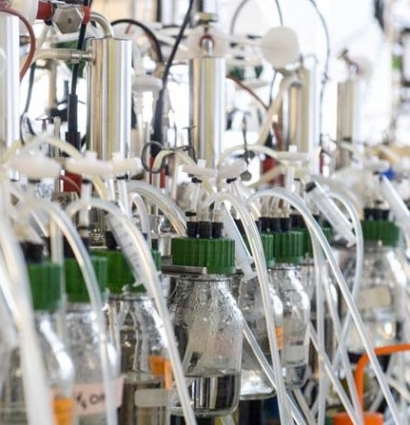
Biogas is an important part of Europe’s renewable energy portfolio. As of 2015, it accounted for about 64 percent2 of primary renewable energy production in the European Union. Biogas offers reduced greenhouse gas emissions and is considered a sustainable energy resource.
One of the most promising uses of biogas is as a fuel for transportation, and Europe has emerged as a leader in this area too.
What Is Biogas?
Biogas is comprised mostly of methane and carbon dioxide (CO2). It’s created naturally when bacteria decompose organic matter in an aerobic environment, one that’s devoid of oxygen. This process, sometimes called anaerobic digestion, releases a mixture of gases we can use as fuel.
Many different kinds of organic materials can act as the feedstock for this biogas. These materials include plant crops and agricultural residue, organic household waste such as food waste, sewage and manure.
There are also many other types of biomass energy that are similar to biogas but also have unique characteristics. You can burn biomass, such as wood or organic waste, directly to produce heat. You can also use biomass to create liquid biofuels such as ethanol and biodiesel.
Ethanol is a liquid fuel made from grains such as corn and barley. Most gasoline used today has some ethanol in it. Biodiesel is made from vegetable oils, greases and fats and can be blended with petroleum-based diesel. Using biodiesel for home heating can also result in an 80 percent reduction in lifecycle CO2 emissions3, according to Smart Touch Energy.
How Does Europe Use Biogas?
We can use biogas in several ways. After upgrading it to biomethane, it can be used directly as a fuel for vehicles. We can also burn it produce heat or electricity.
Turning biogas to biomethane, also called renewable natural gas, involves using a process called conditioning or upgrading to achieve a higher purity standard. This process removes water, carbon dioxide and other elements from the biogas to increase its concentration of methane. You can use this biomethane as an alternative for vehicles that run on conventional natural gas.
With minimal processing, you can also use biogas for many applications, such as generating heat or electricity. You can use either biogas or biomethane for heating, cooling, cooking, water heating and to turn turbines to produce electricity.
Europe leads the way for many uses of biogas. It has 10 gigawatts of electricity production4 across 17,400 biogas plants and generated 61 terawatt-hours of biogas electricity in 2015. About half of Europe’s biogas use was for heating that same year.
Europe also had, in 2015, 459 plants producing 1.2 billion meters cubed (m3) of biomethane and 340 distributing it to the natural gas grid. There are 697 biomethane filling stations across the continent that deliver around 160 million m3 of the gas every year.
How Is Europe Increasing Biogas Use?
There are about 18 million compressed natural gas vehicles worldwide, and the use of biomethane as a fuel for transportation is expected to increase, especially in Europe. Renewable energy in transport in the EU rose from 1.3 percent in 2005 to 6.7 percent in 2015.
The use of natural gas-powered vehicles and distribution for natural gas as a transportation fuel are already well-established. These vehicles and systems can use biomethane in the same way they would petroleum-based natural gas, setting the stage for biomethane consumption to increase.
Europe has launched several initiatives to support the use of biogas. One of the programs, called Bin2Grid5, helped cities convert food waste into biofuel. The project tackled two problems at once: food waste and vehicle emissions.
Another project, called BIOSURF or BIOmethane as SUstainable and Renewable Fuel, involved 11 participants from seven countries6 and sought to remove market barriers to the use of biomethane in Europe.
Biogas in the Future
Countries around the world are taking advantage of biogas for use as a biofuel, but Europe is currently the most prominent user of this resource. There’s good reason for that. Making the switch to it is relatively straightforward, since it can use much of the same infrastructure as natural gas, and it also offers substantial environmental and economic benefits.
Sources:

